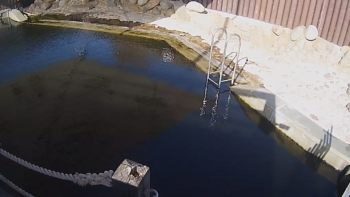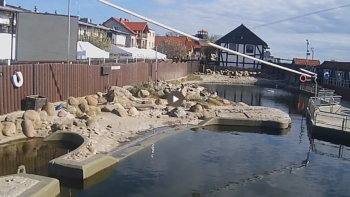
Seal Center in Hel
The Seal Aquarium in Hel is part of the scientific and educational facility, Maritime Station Professor Krzysztof Skóra, Institute of Oceanography, University of Gdańsk.
This resort, located 15 minutes by car from Jurata, is a must visit point during the holidays, not only because it gives the opportunity to see "real" beautiful Baltic seals live, but mainly because the revenues from the sale of admission tickets feed the account facilities, allowing it to help sick and mutilated animals and to develop the institute's scientific and research activities.
History of the Seal Center in Hel
The center was established in 1999. The inspiration for its establishment was a successful attempt to cure the seal named Balbin. It was the first seal delivered to the facility for rehabilitation. The wounded animal, which was then a puppy, was found on March 31, 1992 on the beach in Jurata and transported to Hel, where scientists from the oceanography institute attempted to cure it. When Balbin's condition began to improve, the seal was transferred from the laboratory to the pool adapted from the old septic tank. The seal returned to full strength, which contributed to the development of the center, construction of new swimming pools and all accompanying infrastructure. In this way, the Hel sealarium quickly gaining popularity, became an attraction in itself that should be visited during stay on the Hel Peninsula.
From Balbin to Balbin
The small animal found was so scared that the staff of the institute were not touched. Initially, employees were not able to check the toddler's sex. On the day the baby was found, Balbina's name day was recorded, and because the feminine type was used when talking about seals, the seal was baptized with that name. As it turned out later, the puppy found was male and since then the name Balbin began to be used.
The main goals of the sealarium's activities
The existence of a sealarium is not in itself a tourist attraction. The center has a beautiful and important research and educational function.
The center examines animal behavior, nutrition and diet, age, walking routes, and toxic tissue poisoning. The most important threats to the species and the causes of seal death are determined. The sealarium also provides treatment and rehabilitation of sick animals.
Tested and cured animals are released into the Baltic to free up losses in the population.
The gray seal is a predatory species and has a positive function in the marine ecosystem. They are also a "tester" of fish quality that is consumed by man.
When visiting the sealarium, you can learn about the history of the species and the way of life of seals, while getting acquainted with the problems associated with nature conservation. Lectures and seminars, specialized courses, exercises and apprenticeships for nature students are also organized here.
The sealarium is not a zoo or circus with trained animals.
The purpose of its creation was not to create a tourist attraction, but a place to support species conservation and dissemination of knowledge about seals.
Seal Center is also not a commercial venture, and admission fees are used to cover the costs of maintaining the center's infrastructure and achieving its purpose.
When visiting the sealarium, you can learn about the history of the species and the way of life of seals, while getting acquainted with the problems associated with nature conservation. Lectures and seminars, specialized courses, exercises and apprenticeships for nature students are also organized here.
Live sealarium
On the website of the IOUG Marine Station you can view the life of seals in real time:









